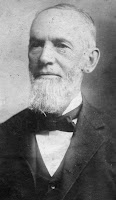Almost every day, I spend some time with a musical instrument in what I consider “casting a net”. What comes out depends on the instrument, the space, my mood, and a whole host of other factors known and unknown, but it’s nearly always worth it. Occasionally – rarely, it seems – I’ll hit upon something that forces me to hear the instrument differently, and it’s those moments that I’m after. They are, indeed, fleeting, but to be able to bring a new perspective to bear can have lasting effects that go beyond that initial moment.
 |
| Old Slave Mart Museum in Charleston, South Carolina |
And so it is for me with museums, too. I visit museums as much as possible. On one hand, I go because “museums” is what I do for a living. I like to know what others are doing, and I’m absolutely ruthless when it comes to stealing the best ideas I can get my hands on. But I also go to museums because I enjoy spending time in them. I am, admittedly, not an astute label reader, and I don’t always follow the prescribed traffic flow. I like to wander, go back and forth, and assimilate what’s around me in a haphazard way. I love the sense of sensory immersion a museum can bring. More often than not, I leave a museum with the feeling of time well spent. Every now and again, though, I walk away with something more – a new way of looking at the past (or the present), a deeper understanding of others, and even a deeper understanding of myself. Like casting that net with an instrument, I go to museums because I’m after something I know I won’t always get.
I recently spent a few days in Charleston, South Carolina with my wife, who was attending a science conference. I had some time to myself, so I did what I always do and visited a few of Charleston’s museums and cultural sites. Charleston is a deeply historic city, and there is no shortage of museums, historic homes, walking tours, and the like to attend to, and I’m happy I was able to get to a handful of them. At one point late in the day, I turned onto one of the city’s last remaining cobblestone streets and found an unassuming pair of glass doors with a sign above marked “Old Slave Mart Museum”. Upon entering, I found what turned out to be one of the very best small museums I’ve ever visited. Located in the building that once housed slaves up for auction, the Old Slave Mart Museum tells the story of the slave trade and brings into focus the experience of those being sold, and those buying and selling, at auction. As you might imagine, it’s not an easy story to tell, but it was done with an impressive degree of attention to historical data and primary sources, all the while in a style subdued but engaging. After about 45 minutes, I left with a much more visceral understanding of the slave trade, and found myself revisiting that topic in my mind with a new sensitivity. Not to overstate it, but it was, in its own way, a transcendent experience.
Museums are unique institutions, and they come in all sizes and types. Finding that transcendent moment doesn’t always happen, and it doesn’t always need to. But when it does, you know it. For me, it always reaffirms why I do what I do, and how we can position The History Center to continue being a place relevant, engaging, and above all, helping all of us put our own perspective in new light.
Scott Callan is the Director at The History Center and has his own blog: http://open-storage.com



